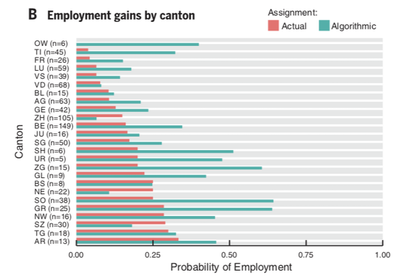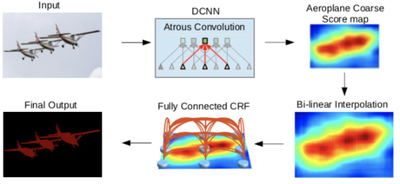My favorite scientific papers of 2018
My last year of Ph.D. is ended. Before knowing where and what to do next, it’s time to write my annual review of the papers I read in the last year. You can find the previous lists of 2017 and 2016.
-
Addressing the minimum fleet problem in on-demand urban mobility1. Autonomous cars and sharing economy are believed to simplify the reduction of gas emission without compromising the economy. However, it is not clear whether they also reduce traffic and vehicles on the road. Here we have a wonderful piece describing a method to reduce a taxi fleet by 30% just with math! By converting taxi trajectories in an optimization problem, Vazifeh et al. were able to optimize the paths covered by taxis on-demand. I am curious to know what Uber and Lyft think about it.
-
Planning for electric vehicle needs by coupling charging profiles with urban mobility2. Is this the year of optimization problems? Yes! This paper shows how to organize the charge of electric vehicles in order to reduce the peak of power demand and, thus, reduce their impact on the electric grid and pollution. Wow!
-
Improving refugee integration through data-driven algorithmic assignment3. In times of politics against immigrants and integration, this paper shows hope for better integration of immigrants through predictive models. While many countries assign refugees according to the capacity of local settlements without considering other factors, this framework can leverage refugees' attitudes and qualities. This model leads to better employment rates thus, integration.

Refugees are among the world’s most vulnerable populations. After experiencing war, violence, and years of living in overcrowded refugee camps, refugees arrive in a new country with few resources and must acclimate to an unfamiliar local language, economy, and culture.
-
Quantifying reputation and success in art4. This is the classic paper that game me the reaction “Why didn’t I think about it?”. By analyzing a dataset of artists' exhibitions, auction sales, and primary market quotes, they assessed the critical role of high-prestige venues and institutions in the success of artistic success.
-
The chaperone effect in scientific publishing5. Chaperones are authors that had gone through the (exhausting) process of writing, shaping and (the almost infinite) editing a paper for a high impact journal. Does a chaperone author allow a more accessible publication to new authors? Yes, it seems that especially in medical and biological sciences, this effect is pronounced. Thus, involve a PI with a long experience of high-impact journals if you want to publish in them! Sad? I do not think so. Maybe it is just about knowing the community and the requirements where you want to publish.
-
DeepLab: Semantic Image Segmentation with Deep Convolutional Nets, Atrous Convolution, and Fully Connected CRFs6. A must-read paper about segmentation, which is the task of assigning a class for each pixel of an image. Although there is also an updated version of this paper, DeepLab v2 is very well written and with a rather elegant way to classify pixel through a Fully Connected Conditional Random Field, and Atrous Convolutions. If you are somehow interested in the recent advancements of deep learning and images segmentation, please read it!

-
TorontoCity: Seeing the World with a Million Eyes7. Since I work on satellite imagery and instance segmentation, I came across this very nice paper that describes the practical challenges of many tasks in the urban environment. For example: how good is land use segmentation when you try to apply it? How well can we recognize buildings and streets? What about the 3D reconstruction of buildings? What I liked the most is that they apply many tasks to the same city, with various data sources.
-
The Moral Machine experiment8. Chapeau Iyad Rahwan! This paper describes the moral dilemma that autonomous driving is facing: in case of an accident, would you choose to put at risk the driver or the person on the street? What if the person on the street crossed it with the red light? What if she is old? What if… These answers depend on the culture? We need only consider that Western culture usually spares young people, while Eastern culture does not! What’s the best way to describe an academic paper? A youtuber ahaha! Try it yourself
- Small cities face greater impact from automation9. Are you interested in ethical questions about Artificial Intelligence? This paper is perfect for you. Some skills are at higher risk of computerization than others. However, education and a highly diversified job market are expected to help people to find a new job. Are all cities created equal? Do some cities face higher risk from automation? By using a nation-wide dataset of occupation, Frank et al. used an elegant and simple combination of entropy metrics to define this risk. Nice!
- Introduction to probability10. This is not an article but a masterpiece of scientific literature! I strongly recommend this book for whoever wants to refine probability. I particularly like how simple is written!
Thanks!
-
Vazifeh, Mohammed M., et al. “Addressing the minimum fleet problem in on-demand urban mobility.” Nature 557.7706 (2018): 534. ↩︎
-
Xu, Yanyan, et al. “Planning for electric vehicle needs by coupling charging profiles with urban mobility.” (2018). ↩︎
-
Bansak, Kirk, et al. “Improving refugee integration through data-driven algorithmic assignment.” Science 359.6373 (2018): 325-329. ↩︎
-
Fraiberger, Samuel P., et al. “Quantifying reputation and success in art.” Science 362.6416 (2018): 825-829. ↩︎
-
Sekara, Vedran, et al. “The chaperone effect in scientific publishing.” Proceedings of the National Academy of Sciences 115.50 (2018): 12603-12607. ↩︎
-
Chen, Liang-Chieh, et al. “Deeplab: Semantic image segmentation with deep convolutional nets, atrous convolution, and fully connected crfs.” IEEE transactions on pattern analysis and machine intelligence 40.4 (2018): 834-848. ↩︎
-
Wang, Shenlong, et al. “Torontocity: Seeing the world with a million eyes.” 2017 IEEE International Conference on Computer Vision (ICCV). IEEE, 2017. ↩︎
-
Awad, Edmond, et al. “The Moral Machine experiment.” Nature 563.7729 (2018): 59. ↩︎
-
Frank, Morgan R., et al. “Small cities face greater impact from automation.” Journal of The Royal Society Interface 15.139 (2018): 20170946. ↩︎
-
Blitzstein, Joseph K., and Jessica Hwang. Introduction to probability. Chapman and Hall/CRC, 2014. ↩︎